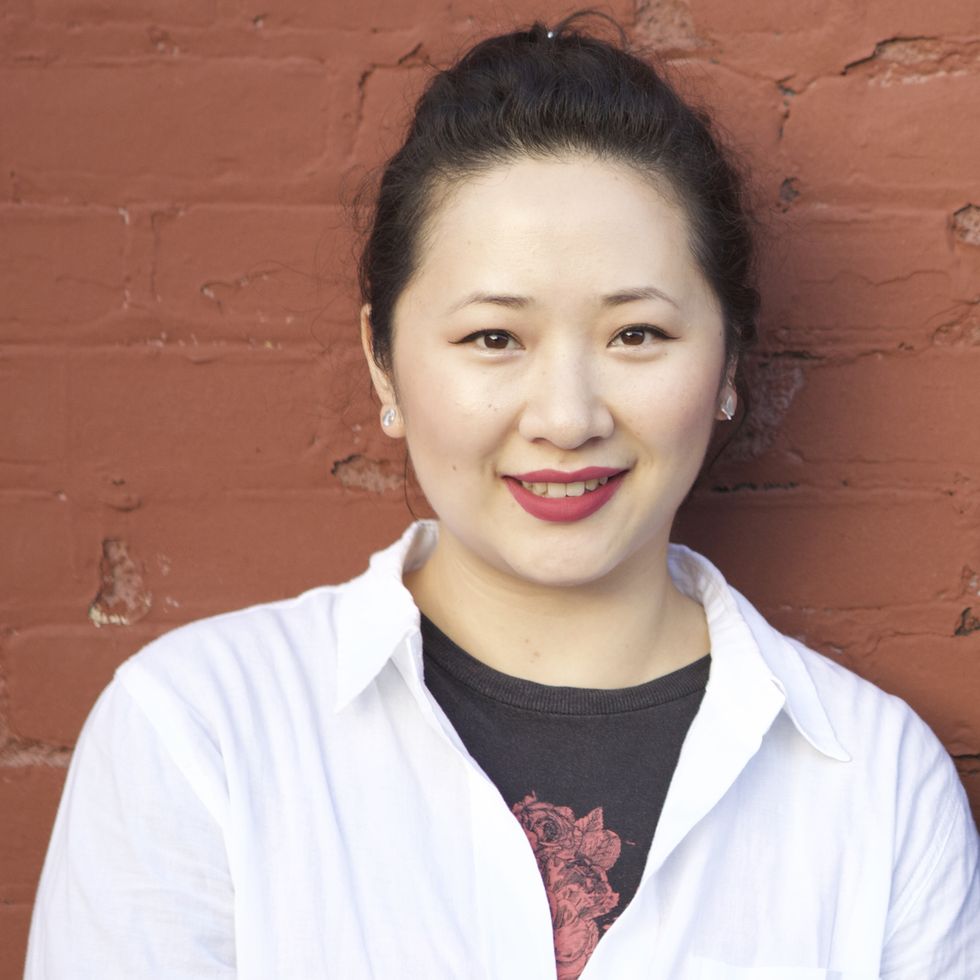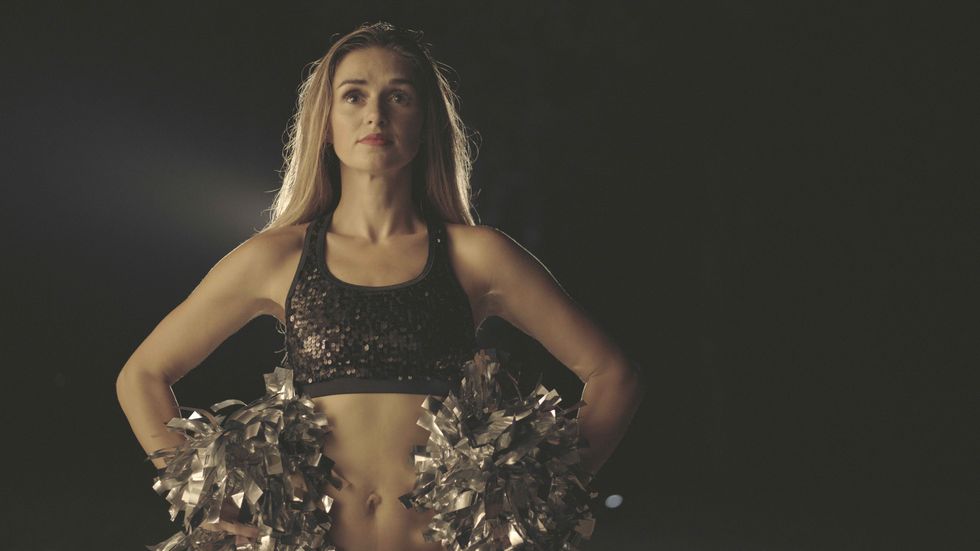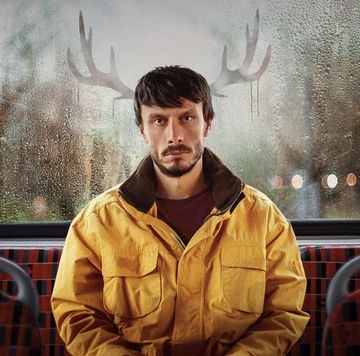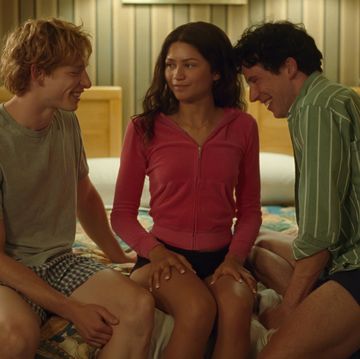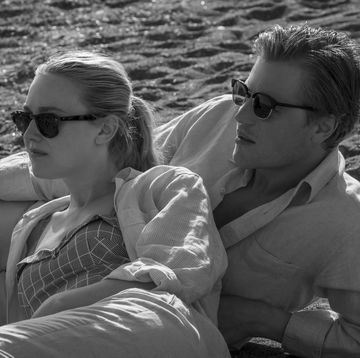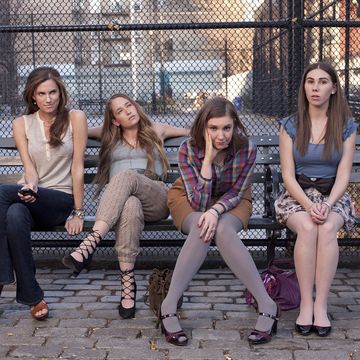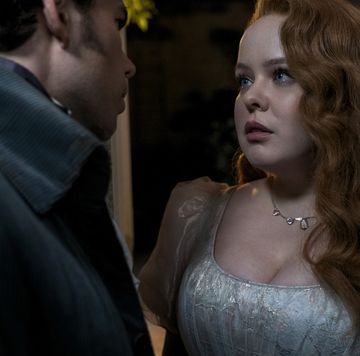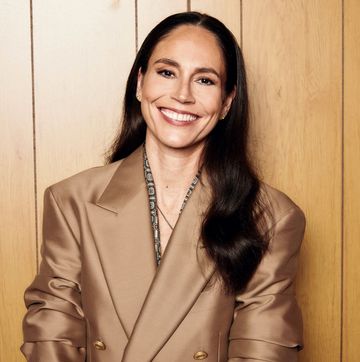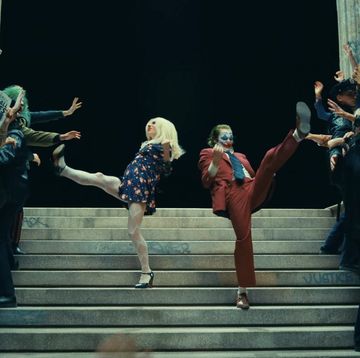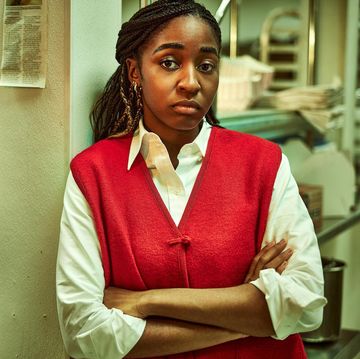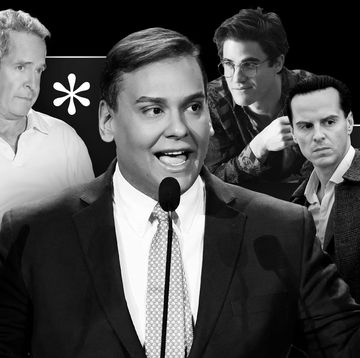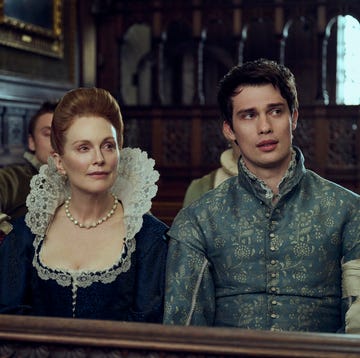What is a woman's work worth?
That's the question at the center of A Woman's Work: The NFL's Cheerleader Problem, a documentary directed by Chinese-Canadian filmmaker Yu Gu, that chronicles two cheerleaders' fights for better pay and working conditions in the male-dominated industry.
In 2014, Oakland Raiderette Lacy Thibodeaux-Fields sued her team for violating labor laws, including paying her and her fellow cheerleaders less than minimum wage ($1,250 for a whole season, or just $125 per game) and failing to compensate for mandatory practices or public appearances. That same year, another cheerleader, Maria Pinzone of the Buffalo Jills, filed a lawsuit against the Buffalo Bills, alleging similarly poor working conditions. Gu followed the women for years as they faced public ridicule, workplace ostracism, and gendered responsibilities.
A Woman's Work, which originally premiered at the 2019 Tribeca Film Festival and airs tonight on PBS, spins a compelling narrative that not only challenges viewers to reconsider their assumptions about cheerleaders but also about woman's labor both at the workplace and at home. And though some positive changes have been made since the debut of the film (like the Raiderettes changing their contract to abide by labor laws and California Assemblywoman Lorena Gonzalez composing legislation specifically to protect professional cheerleaders), Gu warns that there is still much work to be done.
"The journeys these women were on didn't come out of nowhere," says Gu. "They came out of a history and a lineage of women struggling." BAZAAR.com spoke to Gu about making the documentary and the connections between All-American cheerleaders and labor movements.
Read on for the full interview and make sure to tune in to A Woman's Work as part of PBS's Independent Lens showcase tonight, January 4, at 10 p.m. ET.
How did you first hear about what was happening to these NFL cheerleaders? And what was your reaction?
I first read about Lacy's lawsuit against the Raiders in a 2014 LA Times article that was written by Robin Abcarian, who is a longtime journalist who has written about women's issues. At the time, I had recently graduated from USC's film school in L.A., and I had developed this interest and fascination with football. Not just the game itself, but with the narrative and culture surrounding the game.
I loved watching Friday Night Lights. I was really interested in watching a football film—like that story of the underdog, that story of someone who came from nothing and was able to become a champion and bring glory and wealth to his community. And, of course, all of the stories were centered around men and also a lot of underprivileged African-American boys who were brought into this kind of system and sort of indoctrinated with the idea that, "This is your chance, this is your opportunity."
It's particularly interesting, because I lived around USC, and the USC football coach at the time, Pete Carroll, actively recruited from the South L.A. communities around the school. So there's a lot of interesting ways in which the dominant narratives of football shine a light into American history and racial dynamics of wealth and class.
That was something that was very fascinating for me as someone who immigrated to this country. I was born in China and raised in Canada, and I didn't really know anything about football until I came here. So when I read the article about Lacy's lawsuit in 2014, it was a fascinating and personal window for me to delve deeper into this kind of American mythology and to really look at how these gender narratives were affecting women in this male-dominated world.
You've previously talked about football as a metaphor for the American Dream, given its intense and competitive nature. How did you reconcile the All-American cheerleader trope within this larger picture of labor struggle?
I think it really helped to have not grown up with football and cheerleading. I think for so many Americans, it's a religion, right? It's something that you're born into. So many people become fans of certain teams because their parents were watching them since they were infants and it has always been a part of their life. For me, as someone who is coming at it from the view of an outsider, the only knowledge I had on cheerleading was from movies and Hollywood, and I'm someone who doesn't take all of that as the truth. It was more about the people making these narratives and fantasies, and what purpose these characters serve in the larger American mythology.
It was very natural to think of cheerleading and labor rights together. As we were making this film, my team and I did a lot of research looking into the history of the waves of feminism, as well as the history of the NFL and football itself. And if you look at that history, it's intrinsically tied to labor. I think the trick was to find ways to express that in the film.
Some of the interesting things that we found in our research that isn't necessarily in the film, for example, is a 1960s group of Las Vegas showgirls who actually unionized. They were complaining about the same things that some of these cheerleaders of 2014 and later were also complaining about, which is wage theft, no breaks, irregular pay, lack of child care. All of these things were issues that women have been dealing with since the dawn of women in the workplace.
I guess I didn't really have any taboos in mind, like, "Oh, well, these are just women who are doing it for the exposure. They're just trying to look pretty," or whatever it is. I knew that women's value in the workplace is often tied to women's bodies and that gender work is devalued.
Those taboos you mention are also shown in the documentary. There's a part in the film where some Buffalo Bills fans say that the cheerleaders aren't good role models or that their work isn't real labor. Why do you think this sentiment seems to persist?
It's a combination of a few different things. Number one, the nature of their job—the way they're marketed and portrayed by the team that they work for—it's meant to look effortless. If you look at some of their handbooks, like in Lacy's Raiderettes handbook, they have rules where anytime she goes out, even to the grocery store, she has to wear full makeup. There's a concerted effort to portray these women as these perfect beings who are so naturally glamorous and beautiful and athletic and talented.
The other part of it is this kind of misogynistic attitude of taking women's labor for granted. It's natural for women to be mothers. It's natural for them to do housework. It's this false idea that this kind of labor is natural.
And then, I think it's also related to rape culture. A couple years back, a guy who unfortunately shot a bunch of people in UC Santa Barbara, he wrote this manifesto saying that, as a male, he deserves to be loved by women, and he was so angry that they were not offering themselves to him. It's that idea that women's sexuality, women's love, women's attention—that men naturally deserve that. It should just be for free. And I think that's kind of the same thing where some of the male fans have this attitude like, "They're just there. They're supposed to be there. I'm supposed to be getting it for free. Therefore, why should they be paid? Why should there be value assigned to this?"
A compelling part of the documentary is when some former Raiderettes at a reunion talk about the lawsuit with what could be perceived as resentment. Can you talk about the fears or complicated feelings you may have encountered with other cheerleaders as the suit went on?
It was really interesting meeting the older generation of cheerleaders at that Raiderettes reunion in Las Vegas. There were cheerleaders who were from the '60s, '80s, and the '90s who've had a friendship of over three decades. It's a very special time in their lives where they formed these bonds with people, but since then, they'd gone on to work in other jobs. Some had families. They moved to different places. But they still had this unique experience that almost feels like they went to war together and no one else would understand what they've been through except for them.
I think to have Lacy's lawsuit bring this whole experience out in such a public way, and then to have some of the media and the public reaction to be so disparaging—I think there was an element of embarrassment, but also a reaction of, "No, we want to protect this. This is something that we loved and we still love, and we want to protect it." So there was a complicated reaction. In a way, they felt like these women were responsible for dragging their names and their experiences and the reputations of the teams through the mud.
I think also—in terms of the Jills' lawsuit, and when Maria went to talk to some of the other women who are potential members of the class, because it's a class-action lawsuit—it was very difficult because of the contentious nature of the way the lawsuit rolled out. Soon after Maria and the other women filed the lawsuit, the Buffalo Bills and the management of the Jills decided to end the team. In local media, that was portrayed with headlines like, "The Buffalo Jills lawsuit shut down the incoming Jills team." So the blame was very much put on the women who spoke out, instead of placing the responsibility on the team itself. A lot of women who had tried out and who were going to be able to perform couldn't have the opportunity. That created division and anger between them, and when it came time for the class to opt in or out, that became such a contentious issue.
In the film, several of the women that Maria talked to didn't know what to do, because it was pulling on their loyalties and their sense of doing what's right. They felt like their choice could negatively impact their community. It was interesting to hear that thought process, because, again, so much of it wasn't, "What should I do for what is right for myself?" It was like, "How should I make this decision so as to not negatively impact these other women, the friendships I have built, and this community that I have?" I have a lot of sympathy for that. I think that's often what goes on in women's minds. We're not necessarily just thinking of what's best for ourselves. Sometimes, that's a double-edged sword, but, on the other hand, I don't think that's a fault or a vice.
That reminds me of the part in the documentary when Lacy says, "All I do all day is take care of other people." That's also something that's shown throughout the film, as the women deal with the progression of these different lawsuits but also take care of their families. There's also a domestic aspect to it. How did you decide to show those things, and how does it relate to the title, A Woman's Work?
It's funny, because the title has been attached to the film since we wrote the first treatment to apply for funding. Coming into it, I knew it was going to be about this specific labor of being a cheerleader and also women's rights in the workplace overall. I didn't want to just make a film about cheerleading or a film about women in the world of football. It was really about looking at gendered work and women's labor, whether it was in their jobs or outside of their jobs. I think any woman will tell you it's not so simple. It's not just like, "This is my one job. I'm gonna come home and won't do anything else. The rest of my time is fully my time." Even when you have an extremely amazing job, you're doing your job, but you're also fighting to change the world around you, to change your workplace, to change your industry. You're also trying to uplift others at the same time. You're also trying to take care of your family. That is really the nature of women's work. It's this multifaceted experience. As we were making the film, we really wanted to look at the history of women in labor movements and to provide some context that the journeys these women were on didn't come out of nowhere. They came out of a history and a lineage of women struggling.
Much of the litigation that took place was before the Me Too movement gained traction in mainstream spaces. Then, at the end of the documentary, we see that many other lawsuits were beginning to take shape within different cheerleading and dance teams. What was it like for you to witness that shift?
Going into it, we didn't know that the Me Too movement was going to take place. I think for so long, Lacy and Maria and some of the other women felt like they were so alone in some ways. They're all spread out across the whole country. Each team had different contracts. The only thing that was similar was the fact that they were underpaid and treated poorly at work, but there was no common knowledge.
When the Me Too movement hit, it was just this beautiful opening up of possibility. I think we saw that in this new wave of women in 2018, including Bailey Davis and the Houston Texans cheerleaders. There was a sense of hope that their lawsuits and what they did would be a ripple effect that would keep going. I think that was really liberating and reassuring and satisfying to Lacy and Maria to see that continue. With every wave of women standing up, you push it a little bit more, you create a little bit more space for open dialogue and reaction.
However, even now, as we're sharing our trailer for the PBS broadcast and reading some of the recent social media comments—obviously, I know social media isn't the be all, end all—but there's still this victim-blaming attitude. There's the idea of, "If you're going to agree to do this work for free or for a very low pay, powerful corporations are definitely going to exploit you. So that's on you." That kind of victim blaming is still prevalent. I think it's going to take a lot more work and a lot more unity for the flood gates to really open.
It's been six years since you first started working on A Woman's Work and more than a year since it premiered at the Tribeca Film Festival. What do you think has changed or hasn't changed in terms of working conditions for these cheerleaders?
A bunch of the teams, in reaction to the Me Too movement and some of the horrendous sexual harassment scandals that have been a part of the NFL, are trying to clamp down on the sexualization of these women, from changing some of their uniforms to be less sexy to including male dancers. I guess they're trying to reform the image of the cheerleaders, which I feel is misguided and misplaced. Instead of just listening to the women's demands to better their workplace, they're making these changes that skirt the issue and don't actually help solve the problem.
And then, you have this past season during the pandemic, which has been crazy for all industries and workplaces across the world. Almost all the teams had auditions and had selected a cheer team, but then they decided, "Okay, we're only going to have veterans and returning cheerleaders to be on our team." They were not allowed to be in a stadium, but then they were brought into the stadium and had to perform in a different area on the sidelines.
Over Thanksgiving, there was a whole halftime show with the Dallas Cowboy Cheerleaders, and they were wearing masks. There are so many coronavirus cases among the players and the team, and yet there's no information or transparency on how the cheerleaders are being treated. Are they getting tested as well? Are they following the team COVID protocols? There is no information about that. So I think it's still clear that these cheerleaders need better protection in the workplace. There has still yet to be league-wide change.
I'm in touch with a former cheerleader who runs the Pro Cheerleading Podcast, that really helps create community and consensus of what kind of things these women want for themselves and in their workplaces. She did a diversity poll where she analyzed the diversity across all of the NFL and NBA cheer teams. I also think with the racial uprisings over the summer, all of these things have encouraged women to rethink their silence on these issues and to reach out to their communities and make change in a positive way for themselves.
There's been this pervasive culture here within the professional cheerleading world for so long. I think that comes from intentional indoctrination, the intentional way the women were managed with the handbooks and the level of control the team had over their work and their lives outside of work. But now, there is this concerted desire to get rid of that culture of fear. That's really positive, and that's a really important step toward having more unity and taking collective action.
This interview has been edited and condensed for clarity.
As an associate editor at HarpersBAZAAR.com, Chelsey keeps a finger on the pulse on all things celeb news. She also writes on social movements, connecting with activists leading the fight on workers' rights, climate justice, and more. Offline, she’s probably spending too much time on TikTok, rewatching Emma (the 2020 version, of course), or buying yet another corset.
